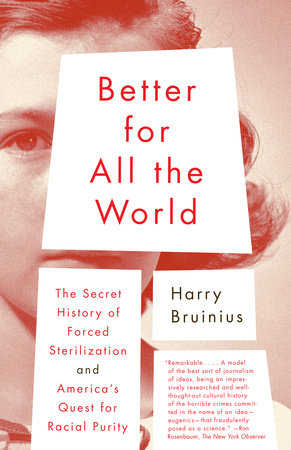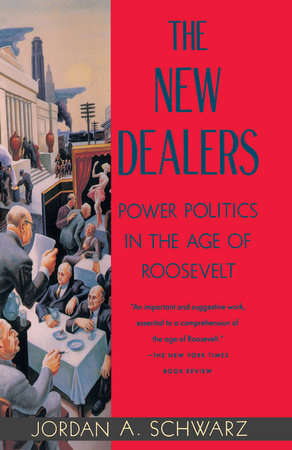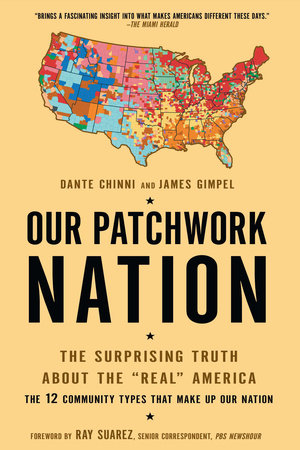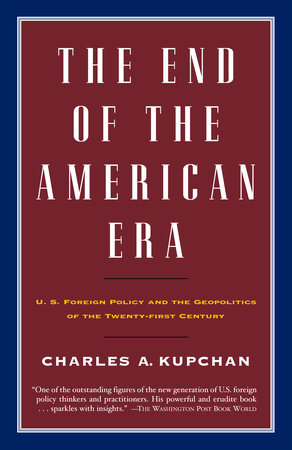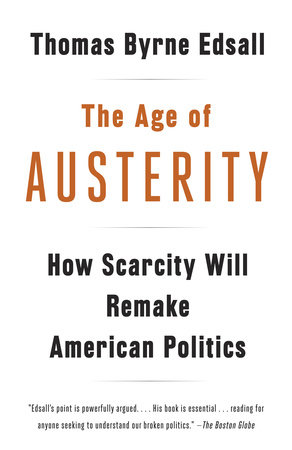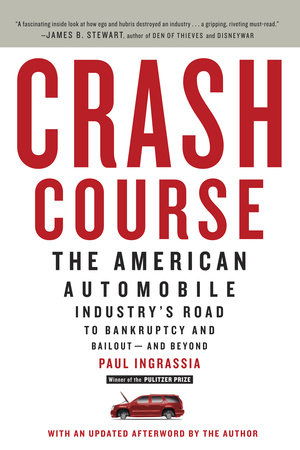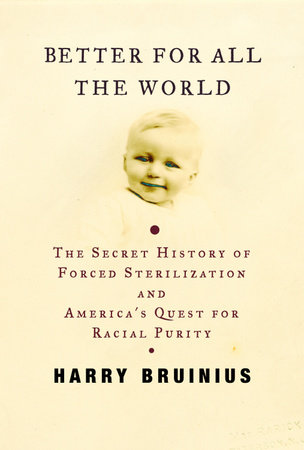Author Q&A
Q: How did you get access to the letters, diaries, and public records you did while researching Better For all the World, and where did that research lead you?A: The research trail for the American eugenics movement led me to a number of archives around the country. The primary repository of documents, photos, and other material is located at the American Philosophical Society Library in Philadelphia. Most all of the papers of Charles Davenport and the Eugenics Record Office, the loci of my story, are housed here. At the Pickler Memorial Library at Truman State University in Missouri, the papers of my other main character, Harry Laughlin, remain available to researchers. Another important repository can be found at the California Institute of Technology Archives in Pasadena, which includes the papers of the Human Betterment Society. But one of the most exciting collections turned out to be the Cold Spring Harbor Laboratory Archives in New York, where I found a treasure trove of untapped sources on the family life of Charles Davenport, including the diaries of his father and mother. I corrected a long-established understanding of Davenport, which maintained that he had been beset by “conflicting influences” as a child, torn between a severe Puritan father and a skeptical, science-loving mother. Not so. As was made clear in his mother’s diaries, she was just as pious as his father, and far from science-loving. Over the years, Davenport’s memories of his mother evolved, and in his later life he had completely forgotten her, describing her to biographers with the personality of his wife. When I began my research of Carrie and Emma Buck, their confidential medical records were, by law, sealed from public view. But when the law was changed in early 2002, I was the first researcher to see them. (Others have claimed this, but I am confident that when I observed them at the Central Virginia Training Center in the summer of 2002, only a few months after the law was changed, I was the first non-staff to see them.) Of course, I read a number of secondary sources, and used information first gleaned by academic historians. In particular, the studies of Allan Chase, Nancy Gallagher, DanielKevles, Wendy Kline, Mark Largent, Paul Lombardo, and David Smith were starting points, and my own research often followed the winding trail of sources they had already laid out in their footnotes. But one of the most meaningful experiences in the course of researching this book would be my time with Lucille. She not only shared painful parts of her life from over 60 years ago, she also allowed me to spend nearly a week with her and showed me places from her past and present. The story of forced sterilization and America’s quest for racial purity is her story, and my hope, above all else, is that this book will be a record of the wrongs done to her and others like her.Q: What groups of people led the eugenics movement, and what were their influences?A: Gabriel Garcia Marquez once described One Hundred Years of Solitude as, in effect, a book about a family who did everything they could to avoid having a child with a pig’s tail, and, precisely as a result of everything they did, ended up having a child with a pig’s tail. As a family saga, Better for All the World traces a similar irony. I pay special attention to the relationship between parents and children and the longings and disappointments that arose out the quest for better breeding. There is a theme of “three generations” throughout the book—an allusion, like the book’s title, to Oliver Wendell Holmes’s decision in Buck v. Bell— so the influences of parents on children, and children on parents, resound in the story. But I also suggest that the American eugenics movement—which, unlike England, passed actual legislation to breed genetically superior citizens—stemmed in part from a unique American self-understanding. Since the time of the Puritans, Americans have seen themselves as a “city upon a hill,” a nation liberated from the old world and its history. Americans have long seen themselves as a “peculiar people,” chosen by God to come to this land of Edenic lushness, where material abundance, good health, and moral purity can reign free. Americans have often defined their civic and spiritual lives through this Biblical image, and have remained relentlessly optimistic, ever confident that the burdens of history and the evils of the past can be swallowed up in this new Jerusalem, this paradise regained in America. But this promise has always been conditional. A return to innocence requires an effort to maintain that innocence, that moral and spiritual purity, or else the promise will become a curse. Many of the eugenics movement’s leaders were New England Protestants, and, using an evangelical tone which harked back to their Puritan forbearers, they proclaimed that the goal of their scientific program was to keep the “American stock” pure by excising the causes of immoral behavior. They saw eugenics as critical to renewing America, purifying it not only from disease, but from moral impurity as well.Q: In 2006, the idea of eugenics seems appalling. Why was it so appealing in the late 1800s, early 1900s?A: We see “eugenics” through the lens of the Holocaust today, and the term is certainly untenable—at least at the moment. However, the same longing for perfection, the same drive for physical “purity,” is hardly an appalling idea today. The premise behind thinkers trumpeting the promises of genetic engineering today remains the same as those promoting eugenics 100 years ago. Then, Mendel’s theory, combined with the stunning, identity shattering ideas of Darwin, led many to believe that human reproduction could be engineered, that human imperfections and ailments could be scientifically eliminated, and that human strengths could be enhanced. I argue that eugenics may have been primitive and misguided, and of course riddled with false premises and shoddy methodologies, but it was not, as many maintain, a “pseudoscience.” Today, many believe that genetic engineering offers the exact same promises as eugenics. And some even dare to suggest we make it a social policy of enhancement in order to move the entire human race to a higher level. On the one hand, those who found eugenics so appealing in the early 20th century were by no means racists or Nazis (though a great many were, of course). Many influential thinkers and politicians rightly believed that science—and, in particular, the science of eugenics and genetics—could help eliminate diseases and social problems, including alcoholism, cancer, and blindness. A great many were honest and well-meaning, and their optimism about the possibilities of science and technology remain very strong with us today. And I wonder how appalling the idea of eugenics seems to a great number of honest, well-meaning people today. Yes, Oliver Wendell Holmes’s words seem shocking, but I think they really are logically sound. It’s a Utilitarian argument. When can reproductive choices be regulated by the state, if they are demonstrably dangerous to society as a whole?Q: How did the American scientists’ work influence Nazi “racial hygiene” and genocide?A: It would be a mistake to see a simple cause-and-effect nexus at work. Eugenics is, however, an Anglo-American idea, and the United States was indeed the pioneer in state-sanctioned programs of better breeding, which included forced sterilization, antimiscegenation, and immigration restriction. Germany had its own history of eugenic research, which dated back to the late 19th century, and many of its eugenic programs rose out German research. But eugenics had been an international movement with international conferences and collaborations, and global research played the same kind of role it usually does in the scientific community, with innovations being picked up, imitated, and revised by scientists in different countries.Having said this, in the early 20th century many American eugenicists had already suggested, however subtly, that euthanasia could be one “solution” for the problem of “mental defectives,” while conceding that it was “probably” against current social mores. While a few thinkers did suggest euthanasia as a eugenic solution—and there was a significant castration movement in the late 19th century—few called for actually killing. Forced sterilization, too, was very controversial in the early decades after 1900, reaching a high point in the late 1920s and early 1930s. When the Nazi regime instituted its comprehensive sterilization program in 1934, it hailed American research and legislation as the model. This was probably for propagandistic purposes as much as anything, since such a program is inherently controversial.Q: As the states adopted new eugenic laws, when and how did the federal government, including President Theodore Roosevelt, become involved?A: The federal government was involved in the early period of the eugenics movement. In 1906, President Theodore Roosevelt’s Secretary of Agriculture, William Hayes, appointed Davenport and other prominent scientists to a national “Heredity Commission,” charging them to investigate America’s genetic heritage. Its purpose, Hayes said, should be scientific research, but “with the idea of encouraging the increase of families of good blood, and of discouraging the vicious elements in the cross-bred American civilization.” The Commission should also try to discover whether “a new species of human being may be consciously evolved,” even amid the resistance of traditional culture and mores.This commission helped organize eugenic research and bring together key scholars in the early 20th century, but no federal legislation rose out of it. The key federal legislation is arguably the 1924 Immigration Act, which severely curtailed the immigration of “non-Nordic” peoples, especially Jews. While not an explicitly eugenics act, the arguments in Congress centered around the idea of racial purity. And Calvin Coolidge, who signed the bill into law, had said, “America must be kept American. Biological laws show that Nordics deteriorate when mixed with other races.” But in this pre-New Deal era, most eugenic legislation was passed on the state level.
